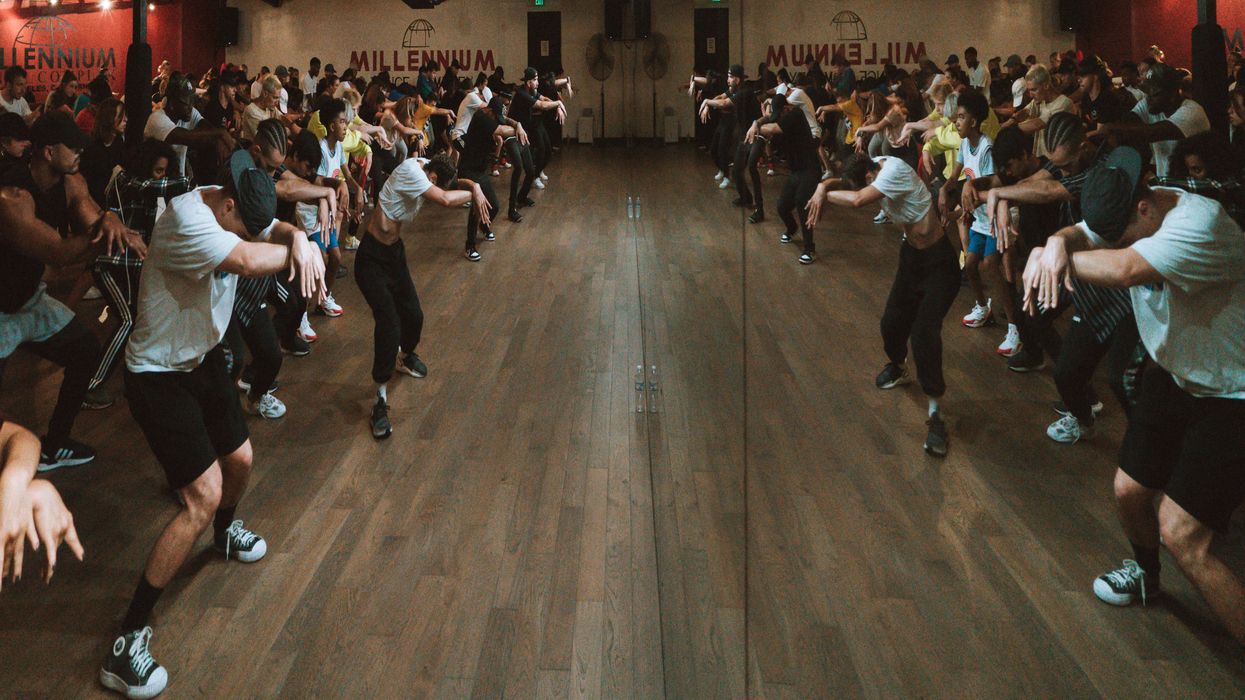The Week-Long Intensives That Offer a Taste of L.A. Dance Life
As Ricky Martin’s “Livin’ La Vida Loca” blasts through the speakers, choreographer and teacher Amy Morgan leads seven students through a heels routine. “There needs to be more urgency to the movement,” she insists, reminding them to “come up with the booty” after a slinky crouch to the floor in their fiercely vertiginous stilettos.
Classes like Morgan’s, which offer personal attention and hands-on tips, attract dancers to the Millennium Dance Complex’s Industry Intensives, designed to orient budding professionals who want to break into the Los Angeles and Las Vegas commercial dance worlds. For the last 15 minutes of the class, Morgan dispenses nuggets of advice, answering questions about strengthening ankles, her own dance career and mending feet tortured by heels.
“Patience is the key,” says Morgan with the warmth of a caring older sibling.
Ann Marie Hudson, the CEO of the Studio City, California, hub for L.A.’s professional dancers, created the five-day Industry Intensives primarily to introduce career-oriented out-of-towners to the commercial dance industry.
“We have choreographers, managers and people from every part of the industry talk to them about how to prepare and train in their hometowns and then come here for finishing,” she says.
The intensives include training on dancing for the camera, auditioning techniques, styling hair and makeup, and anticipating what agents seek. Dancers can also assess whether they need acting and singing lessons. “We give them a toolbox as they move towards becoming working industry professionals,” says Hudson.

Topher Shigley, courtesy Millennium
The intensives run from Monday through Friday, with two sessions daily that go from 10 am to 2 pm. Well-known commercial choreographers such as Marty Kudelka, Luther Brown and Rhapsody James have taught sessions. Attendees can also take as many classes as they want from the regular Millennium schedule at a discounted rate. Although the school also offers an intensive in the spring, fall and winter, there are usually three in the summer.
No audition is necessary, but Hudson stresses that the intensive is best for experienced dancers.
“The level of the classes, the intensity and the challenge of the choreography is something that is specific to New York and L.A.,” she says. Because the choreographers who teach in the Industry Intensives keep an eye out for talented dancers, the week can be a networking opportunity. “A choreographer might say, ‘Hey, why don’t you come audition?’ ” says Hudson.
Each intensive includes a videoed mock audition to show the dancers how to focus on the camera and work with camera angles. They also meet with agents who discuss what kinds of gigs they currently are booking and what they look for in a dancer.
“It’s knowledge from the source,” says Hudson. “In commercial dance, what people are booking changes from year to year. You have to be prepared to do everything, because trends change.” Proficiency in hip hop, for example, is now typically nonnegotiable.
For Arianna Marrero, a 17-year-old from New York City who has studied for nine years at Broadway Dance Center, a weeklong Millennium intensive helped her crystallize her goal of dancing in music videos.
“Being able to learn from such experienced artists really opened my eyes to what I want,” she says. “I learned about what the industry is truly like, the negatives and positives.”
Hudson says the intensives aim to be frank with students. “The dancers learn that they have to become the strongest dancer they can be, do the most performances they can in their hometowns,” says Hudson. “Everything else, you can get through fine-tuning. There’s no magic key.”




